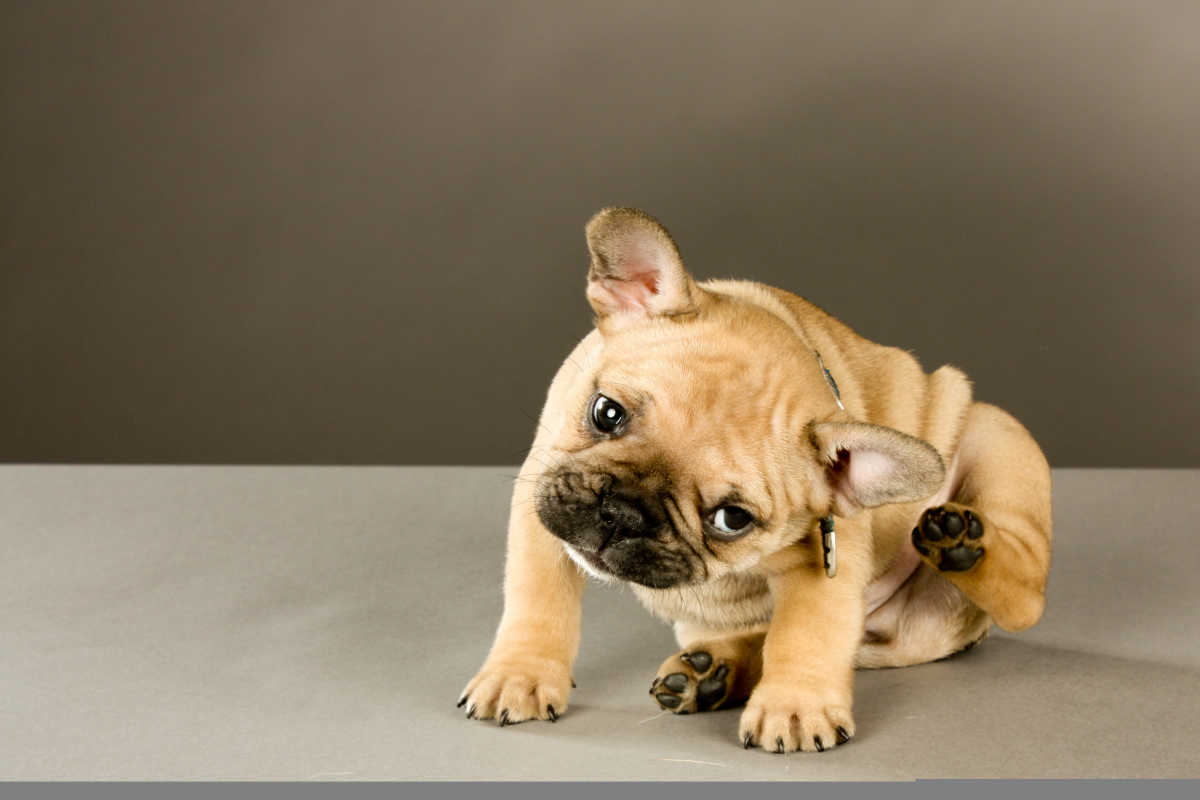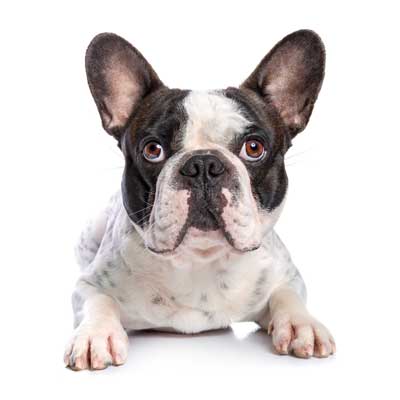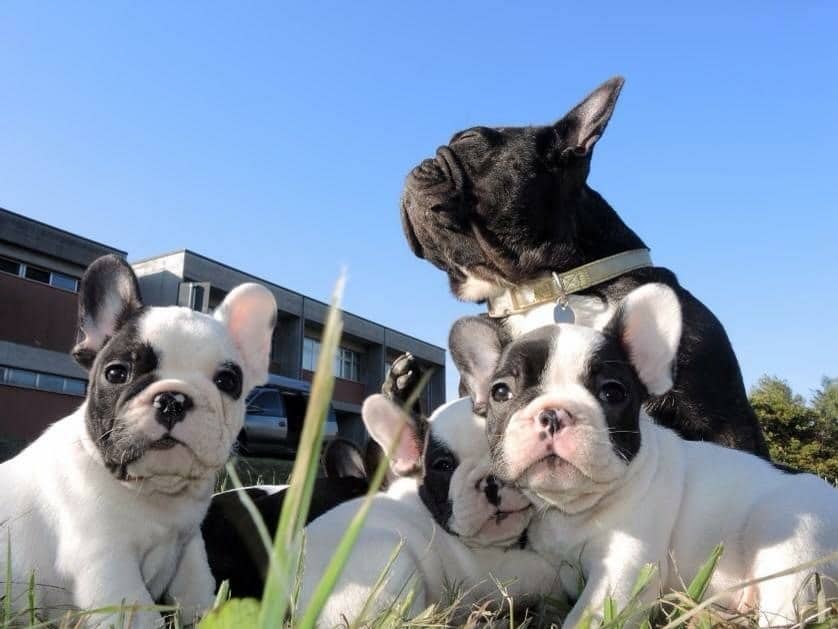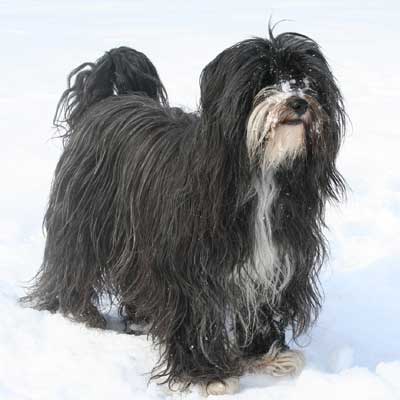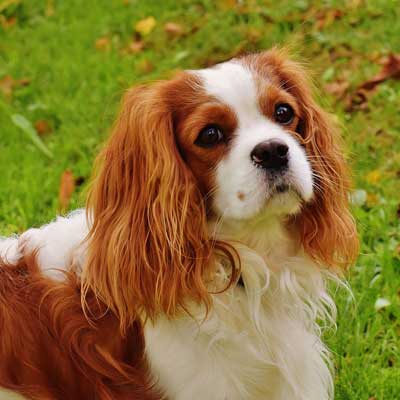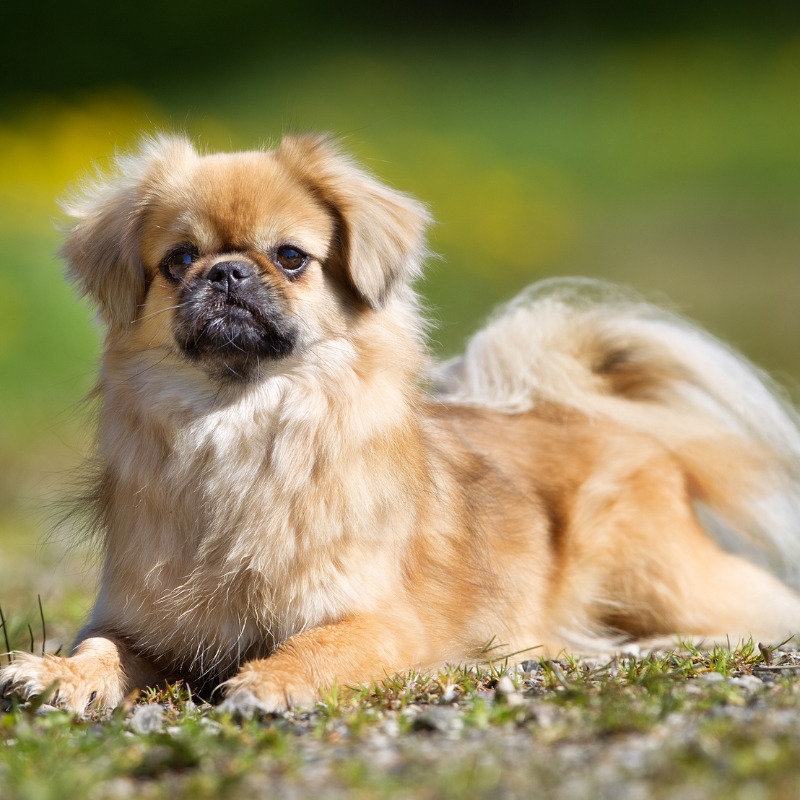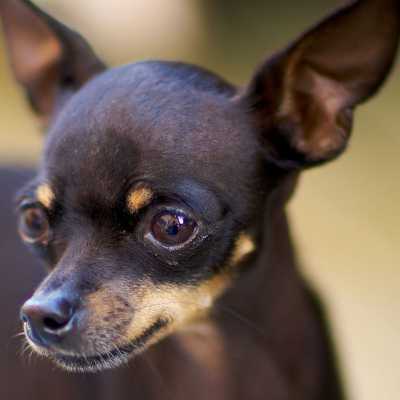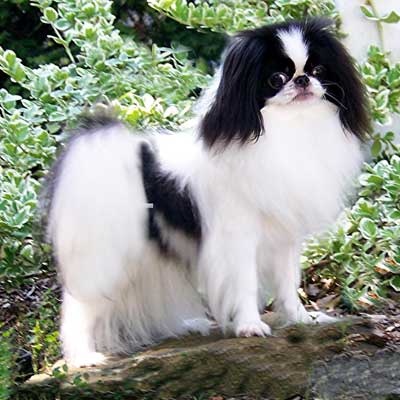-
Head
Must be strong, broad and square, covered by the skin of the
head which forms symmetrical folds and wrinkles, without excess.
-
Head - skull region
Skull: Broad, almost flat from ear to ear, domed forehead.
Proeminent superciliary arches, separated by a particularly
developed furrow between the eyes. The furrow must not extend
onto the skull. External occipital protuberance is barely developed.
Stop: Pronounced.
-
Head - facial region
The head of the Bulldog is characterized by a shortening of the maxillary-nasal part as well as a slight to moderate slope of the nose backwards. The nose is slightly upturned (“snub nose”).
Nose: Black, broad, snubbed, with symmetrical and well opened
nostrils, slanting towards the rear. The slope of the nostrils as well as the upturned nose must, however, allow normal nasal breathing.
Muzzle: Very short, broad, with concentric symmetrical folds.
Lips: Thick, a little loose and black. The upper lip meets the lower
lip at its middle, completely covering the teeth.
The profile of the upper lip is descending and rounded. The tongue must never show when the dog is not excited.
Jaws/Teeth: Broad and powerful. The lower jaw projects in front of the upper jaw and turns up. The arch of the lower incisors is
rounded. The jaw must not show lateral deviation, or torsion.
The gap between the incisors of the upper and the lower jaw
should not be strictly delimited, the essential condition being
that the upper and the lower lips meet to completely cover the
teeth. The lower incisors surpass the upper incisors. Sufficiently
developed incisives and canines. Complete bite is desirable.
Cheeks: Well developed.
Eyes: Clearly visible eyes, striking with lively expression, set low,
quite far from the nose and the ears, dark coloured, rather large,
rounded, showing no trace of white (sclera) when the dog is looking straight forward. Rims of eyelids must be black.
Ears: Medium size, wide at the base and rounded at the top. Set
high on the head, but not too close together, carried erect. The ear is open towards the front. The skin must be fine and soft to the touch.
-
Neck
Short, powerful, slightly arched, without dewlap, broadens
towards the shoulder.
-
Body
Topline: Rising progressively, but not excessively, from the
withers towards the loin. That conformation – also called roachback – is typical for the breed.
Back: Broad and muscular, firm without slackness.
Loin: Short, broad and arched.
Croup: Well sloping.
Chest: Cylindrical and well let down (slightly under the elbows);
very well sprung ribs, so-called “barrel shaped”. Fore chest, broad and square-shaped, seen from the front.
Underline and belly: Tucked up but not whippety.
-
Tail
Naturally short, ideally long enough to cover the anus, set
low, rather straight, thick at the base and tapering at the tip.
A kinked, knotted, broken or relatively long tail that does not
reach beyond the point of the hocks, is admitted. It is carried
low. Even in action, the tail must not rise above the horizontal.
-
Forequarters
General appearance: Forelegs upright (and straight) seen in profile and from the front.
Shoulder: Must be well laid back.
Upper arm: Short, thick, muscular, slightly curved.
Elbows: Close and tight to the body.
Forearm: Short, straight and muscular.
Carpus (Wrist): Solid and short.
Metacarpus (Pastern): Short and slightly oblique seen in profile.
Forefeet: Round, compact, of small dimension, i.e. «cat feet»,
turning slightly outward. The toes are tight, nails short, thick
and black.
-
Hindquarters
General appearance: The hindlegs are strong and muscular, a
little longer than the forelegs, thus raising the hindquarters. The
legs are upright as seen both in profile and from behind.
Thigh: Well muscled, firm.
Hock joint: Quite well let down, neither too angulated nor too
straight. Tarsus: solid.
Metatarsus (Rear pastern): Short.
Hind feet: Round, compact, turning neither inward nor outward.
-
Feet
Round, compact, turning neither inward nor outward.
-
Gait / Movement
The legs moving parallel to the median plane of the body, whether seen in front or in profile.
Free, powerful and smooth movement.
-
Coat - hair
Smooth coat, close, glossy and soft, without undercoat.
-
Coat - colour
fawn, brindled or not, with or without white spotting.
-
Coat without white spotting (extended)
Brindle: Fawn coat moderately characterized by transversal
dark brindling creating a ‘tiger-marked’ effect, strongly
brindled coats must not cover out the fawn ground colour. A
black mask may be present. Limited white spotting is admissible.
Fawn: Solid coat, from light fawn to dark fawn, sometimes
presenting a paler colouring of the inclined parts, with or
without a black mask, although masked subjects are preferred.
Sometimes accompanied by limited white spotting.
-
Coat with white spotting
Brindled with moderate or important white spotting: So-called
‘pied’, the spotting being ideally distributed over the entire
subject. Some blotches on the skin are admissible.
Fawn with moderate or important white spotting: So-called
‘fawn and white’, the spotting being ideally distributed over the
entire dog. Some blotches of the skin are tolerated. The nose is
always black, in all coat colours, never brown or blue. The allwhite subjects provided the edge of eyelids and nose are black – are admitted but not bred for, because of a risk of deafness.
-
Size and weight
Height at the withers: Males: 27–35 cm. Females: 24–32 cm.
A deviation of 1 cm above and below the standard is tolerated.
Weight: Males: 9–14 kg. Females: 8–13 kg.
500 g more than the standard weight is allowed when the subject
is typical.
-
Faults
• Aggressive or overly shy dog.
• Any dog clearly showing physical or behavioural abnormalities.
• Lacks type: insufficient ethnic characteristics which result in
the dog not really resembling other subjects of the breed.
• Completely closed nostrils.
• Torsion or lateral deviation of the jaw, resulting in the tongue
constantly being visible.
• Dog with lower incisors articulating behind upper incisors.
• Dog with permanently visible canines (fangs), mouth being
closed.
• Heterochrome eyes (wall eye).
• Colour of nose other than black.
• Ears not carried erect.
• Taillessness or ingrown tail.
• Dewclaw on hindquarters.
• Reversed hock.
• Long, wired-haired or woolly coat.
• Colour not in accordance with what is prescribed in the standard, namely black, black with fawn markings (black and tan) and all dilutions of black with or without white spotting.
• Size and weight outside the standard limits.
• Respiratory distress.
• Deafness.
N.B.:
• Male animals should have two apparently normal testicles fully
descended into the scrotum.
• Only functionally and clinically healthy dogs, with breed typical
conformation, should be used for breeding.
-
Severe faults
- ipertipo, esagerazione delle caratteristiche di razza
- muso troppo lungo o esageratamente corto
- lingua visibile a bocca chiusa
- occhi chiari (da rapace)
- linea superiore orizzontale dal garrese al rene
- eccessiva depigmentazione delle labbra, del naso o delle palpebre, la cui rima non dovrebbe mai essere completamente depigmentata
- chiusura a tenaglia
-
Disqualifying faults
- soggetti aggressivi o paurosi
- qualunque soggetto che mostri chiaramente anomalie di ordine fisico o comportamentale deve essere squalificato
- mancanza di tipo: caratteristiche di razza insufficienti e tali che il soggetto non assomigli agli altri della stessa razza
- narici completamente chiuse
- torsione o deviazione laterale della mandibola con lingua costantemente visibile
- soggetti con incisivi inferiori situati dietro a quelli superiori
- soggetti con canini permanentemente visibili anche a bocca chiusa
- occhi eterocromi
- tartufo di colore diverso dal nero
- orecchie non erette
- anurismo o coda incarnita
- presenza di speroni sugli arti posteriori
- garretti invertiti
- pelo lungo, duro o lanoso
- colore del mantello non conforme a quanto previsto dallo standard, nello specifico nero, nero con focature fulve e tutte le diluizioni del nero con o senza macchie bianche
- taglia e peso al di fuori dei limiti dello standard
- soggetti che mostrano segni di sofferenza respiratoria
- sordità

